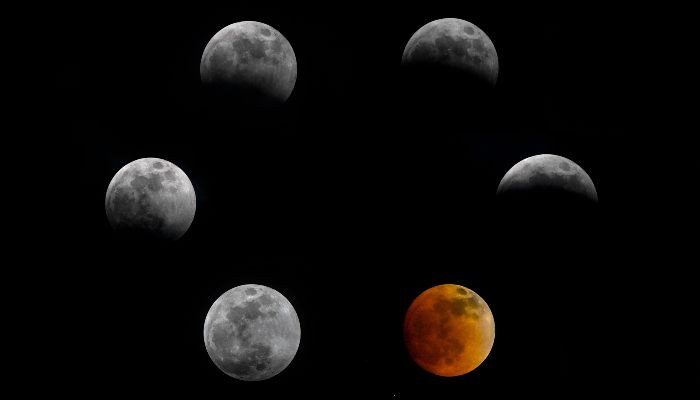Total Lunar Eclipse: A “Blood Moon” Spectacle for Pakistan
Stargazers across Pakistan are in for a treat as a total lunar eclipse, often referred to as a “Blood Moon,” will grace the night sky between September 7 and 8.
The Pakistan Meteorological Department (PMD) has confirmed that this remarkable celestial phenomenon will be widely observable throughout the nation.
The initial dimming of the moon’s luminescence is expected to commence at 8:28pm (PST) on September 7. The partial eclipse phase will begin at 9:27pm, subsequently leading to the onset of the total eclipse at 10:31pm.
The apex of the eclipse is anticipated at 11:12pm, with the total phase concluding at 11:53pm. The partial eclipse will persist until 12:57am, and the entire event will conclude by 1:55am on September 8.
Viewers in Asia, including India and China, will also be ideally situated to witness this total eclipse. It will also be visible on the eastern fringes of Africa, as well as in western regions of Australia.
The complete lunar eclipse is expected to span from 1730GMT to 1852GMT.
Later in the month, specifically on September 21 and 22, the year’s second and concluding partial solar eclipse will manifest. This will be visible from the southern reaches of Australia, the Pacific Ocean, the Atlantic Ocean, and Antarctica.
Sky watchers in Europe and Africa will have a brief chance to observe a partial lunar eclipse as the Moon ascends during the early evening hours, while the Americas will unfortunately miss this event.
The Moon’s reddish appearance during lunar eclipses is attributed to sunlight being “reflected and diffused through Earth’s atmosphere,” according to Ryan Milligan, an astrophysicist from Queen’s University Belfast in Northern Ireland.
He explained that shorter blue wavelengths are more readily scattered as they traverse the Earth’s atmosphere, resulting in the moon’s distinctive red hue.
While specialized eyewear or pinhole projectors are essential for safely viewing solar eclipses, observing a lunar eclipse requires only clear skies and a suitable vantage point.
The most recent total lunar eclipse occurred in March of this year, with the preceding one taking place in 2022.
Milligan, who describes himself as a dedicated “solar eclipse chaser,” considers this event a prelude to what he refers to as the “big one” slated for the following year.
A rare total solar eclipse, wherein the Moon completely obscures the Sun’s light, will be visible across a narrow segment of Europe on August 12, 2026.
Over the past decade, Milligan has traveled extensively to witness 12 totalities, which occur when the Moon entirely blocks out the Sun.
Next year’s totality, marking the first in mainland Europe since 2006, will be exclusively visible in Spain and Iceland, although neighboring countries will have the opportunity to witness a substantial partial eclipse.
In Spain, the totality will be observable within an approximate 160-kilometre (100-mile) zone between Madrid and Barcelona, though neither of these cities will experience the complete phenomenon, according to Milligan.
It will be the inaugural total solar eclipse since the one that traversed North America in April 2024.



Comments (0)
No comments yet. Be the first to comment!
Leave a Comment